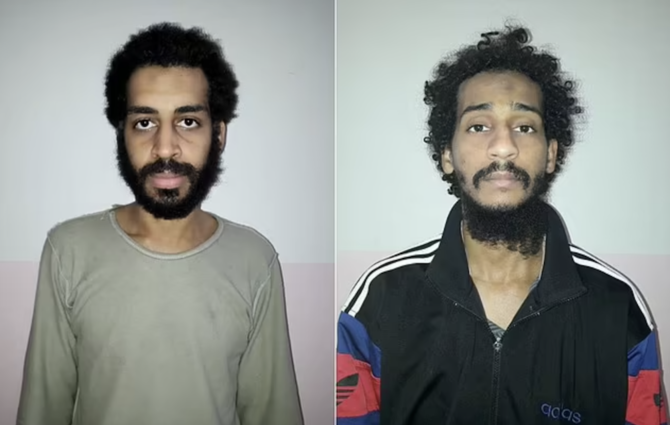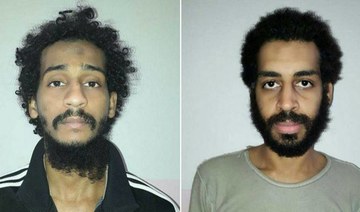LONDON: A French war photographer has told the trial of one of the four Daesh “Beatles” how he and other prisoners of the group tried to commit suicide to escape their tormentors.
Edouard Elias, who was captured by Daesh in Syria in June 2013, reportedly told the court in Alexandria, Virginia: “We found plastic bags and ropes. We tried to find a way of suicide.”
Elias, 30, was speaking at the trial of former British national El Shafee Elsheikh, who is accused of playing a key role in the kidnapping and deaths of four Americans, aid workers Kayla Mueller and Peter Kassig, and journalists James Foley and Steven Sotloff.
The photojournalist was captured within an hour of entering Syria from Turkey with colleague Didier Francois, and after being taken to Aleppo and accused of working for the CIA, was held for 10 months by Elsheikh and the other Daesh “Beatles,” a nickname earned because they all had British accents.
Elias described them as “professionals,” detailing how they would wear black masks, military fatigues and boots rather than the casual dress of their fellow Daesh members, carried Glock pistols at all times, and how seriously they took torturing their captives.
He said they would goad each other into snapping the fingers of their victims, and would make them sing a version of the song “Hotel California,” emphasizing a lyric at the end which states “you can never leave.”
Elias told the court: “They repeated it again and again, laughing. I cannot listen to that song anymore.”
The photographer said he had been chained to a radiator and deprived of food and water for three days after he was first captured, causing him to hallucinate.
He was deprived of sleep by being regularly beaten and forced to listen to the screams of other captured Westerners. He was also forced to watch other detainees being tortured after he was moved to another facility called “The Eye Hospital.”
He said: “I was very scared because I thought I would be next. You could see their blood everywhere. When they took me out of the room for interrogation, they dragged me through the blood of the other victims.”
Elias also described Danish photographer Dan Rye, who he met in captivity and was held by the group for over a year, as “not like a human being, just a corpse, like a body barely breathing.”
After he was transferred to the custody of the “Beatles,” he said they would regularly enter cells to beat detainees by making them kneel facing walls before assaulting them. He said prisoners were forced to pose in orange jumpsuits for videos pleading to be ransomed, and described how he was transferred from Aleppo to Raqqa as part of a Daesh convoy that he compared to a scene from the film “Mad Max.”
He said he was held in Raqqa at a jail called “The Oil Facility” from February 2014 until his release, where 18 prisoners were packed into a cell with only a bucket for a toilet.
One day the “Beatles” removed a man from the cell and returned days later to show the remaining prisoners images of the man’s head with a bullet wound. Elias added that, when prisoners were released, their former jailers would beat other cellmates as they departed, warning them not to talk to the media, and threatening to kill the remaining hostages if their ransom demands were not met.














